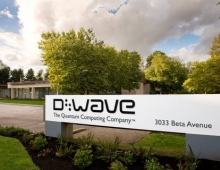
NEC's Advancement Could Help Launch High Performance Programmable Logic LSI At a Low Cost
NEC, in collaboration with the National Institute of Materials Science, today announced the successful integration of NanoBridge, a solid electrolyte non-volatile crossbar switch, in Cu interconnects placed on CMOS logic. This development enables the realization of high performance non-volatile programmable logic at a low cost.
Until now, reducing the size of transistors enabled programmable logic to enhance the performance and multi-functionality of electronic devices. However, in the near future, an inability to further reduce the size of transistors, as well as an increase in stand-by power from current leakage, will prevent greater transistor logic size reductions. New technologies are now required in order to enhance the performance of programmable logic.
NEC and the NIMS' jointly developed NanoBridge circuit reconfiguration switch is integrated with a logic block, reducing its chip area to a fraction of a conventional chip's, which results in lower costs, lower stand-by power consumption, and higher operation speed. The nonvolatality of NanoBridge also contributes to low stand-by power consumption.
These technologies enable greater development efficiency and higher performance within a wide range of electrical products, including mobile devices and digital televisions.
NEC regards integrated NanoBridge technologies as essential to next generation, low-power consumption, programmable logic, and the company aims to drive their early implementation and to advance their future research and development.
NEC and the NIMS present NanoBridge technologies, at the International Electron Devices Meeting (IEDM) held in Baltimore from December 7, 2009 (presentation on December 9).
A NanoBridge is composed of a metal-oxide solid-electrolyte sandwiched between two electrodes (Cu and Ru). Cu+ ions generated at the Cu electrode diffuse into the solid-electrolyte along the applied field, resulting in the formation of a nanometer-scale metallic bridge and turning to a low conductive state (ON state). A solid electrolyte is a solid body in which ions can move about freely.

NEC and the NIMS' jointly developed NanoBridge circuit reconfiguration switch is integrated with a logic block, reducing its chip area to a fraction of a conventional chip's, which results in lower costs, lower stand-by power consumption, and higher operation speed. The nonvolatality of NanoBridge also contributes to low stand-by power consumption.
These technologies enable greater development efficiency and higher performance within a wide range of electrical products, including mobile devices and digital televisions.
NEC regards integrated NanoBridge technologies as essential to next generation, low-power consumption, programmable logic, and the company aims to drive their early implementation and to advance their future research and development.
NEC and the NIMS present NanoBridge technologies, at the International Electron Devices Meeting (IEDM) held in Baltimore from December 7, 2009 (presentation on December 9).
A NanoBridge is composed of a metal-oxide solid-electrolyte sandwiched between two electrodes (Cu and Ru). Cu+ ions generated at the Cu electrode diffuse into the solid-electrolyte along the applied field, resulting in the formation of a nanometer-scale metallic bridge and turning to a low conductive state (ON state). A solid electrolyte is a solid body in which ions can move about freely.






















